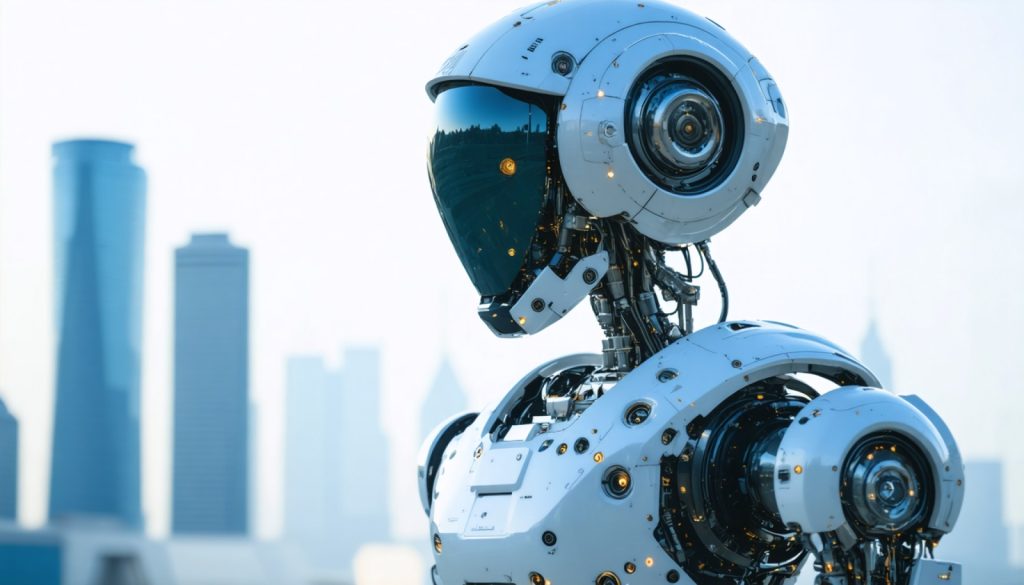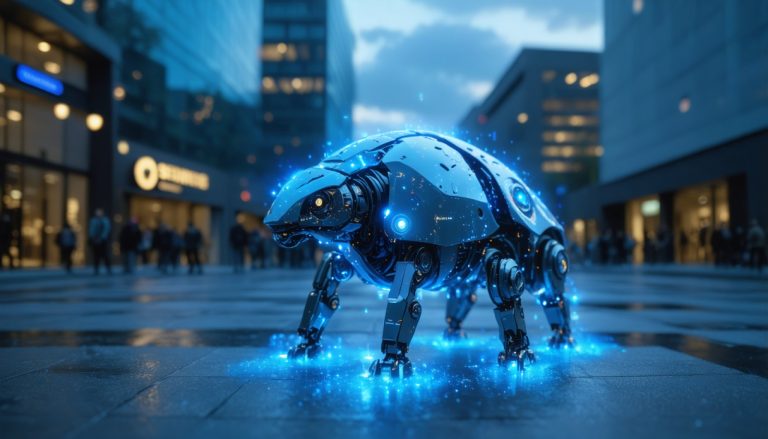
- Technological advancement is driving a significant transformation, with AI at the forefront, making traditional approaches like tariffs obsolete.
- President Trump’s reliance on tariffs, advised by figures like Peter Navarro, reflects outdated economic strategies ill-suited for today’s global market challenges.
- Visionaries like Elon Musk criticize tariff policies, advocating for innovative solutions aligned with technological growth.
- Companies such as OpenAI and Google are leading the charge towards artificial general intelligence (AGI), poised to redefine multiple sectors.
- Automation and AI are reshaping labor markets, emphasizing the need for workforce adaptability and creativity over manual tasks.
- Current U.S. leadership must anticipate technological shifts, crafting policies for workforce retraining and tech readiness.
- A future-focused leadership, embracing technological prowess, is essential for thriving in the burgeoning digital age.
For those keeping pace with the swift currents of technological advancement, it’s clear that we’re on the brink of an unprecedented transformation. As the digital age surges forward, President Donald Trump remains tethered to archaic economic views, reminiscent of a bygone era. His embrace of tariffs, particularly under the guidance of controversial figures like Peter Navarro, symbolizes a stubborn clutch at past economic strategies that fail to address the realities of today’s global market. Trump’s advisors, such as Navarro, argue in favor of tariffs, attempting to bolster U.S. industries through policies more aligned with isolationist ideals than global cooperation. Yet, industry magnates like Elon Musk publicly mock these approaches, highlighting their disconnect from the innovative spirit that companies like Tesla represent.
Trump’s comparison of tariffs to bitter medicine belies the complex interplay of global trade. While tariffs might temporarily shield some domestic sectors, they risk encouraging stagnation amidst technological leaps reshaping industries worldwide. On paper, tariffs sound like protection, but in practice, they’re a fading shield against the tide of technological progress. While tariffs linger like shadows of a rusty industrial past, the future heralds a transformation driven by AI—a revolution that demands new policies and visionary leadership.
In the realm of artificial intelligence, titans like OpenAI, Anthropic, and Google are crafting the framework for our digital future. These companies usher in an era where artificial general intelligence (AGI) is within sight—a point where machines may possess human-like understanding, enhancing fields from medicine to energy. Visionaries like Sam Altman and Ray Kurzweil foresee AGI reshaping our social and economic landscapes. The hurdles are significant, from ethical conundrums to economic implications, yet these challenges eschew traditional solutions like tariffs or manual labor.
Automation and AI are not just the future—they are now. They diminish the relevance of low-skill labor, urging a pivot towards sectors that harness creativity and human ingenuity. Where once trade in goods defined our economic strength, the new frontier hinges on intellectual trade and innovation. Looking at the workforce landscape, if technology eradicates jobs tied to manual tasks, the answer is not to romanticize old industries but to cultivate an adaptable workforce prepared for new opportunities. The past has shown us that technological progress often yields new jobs, yet there’s no guarantee that this will hold true as we march towards AGI.
Congress and future administrations must anticipate and guide these changes, crafting policies that retrain and equip workers, ensuring a workforce ready for the tech-centric world. Yet, Trump’s administration remains remarkably out of touch—not just failing to wield smartphones proficiently, but missing the broader picture of a rapidly unfolding AI reality. His outdated mindset at such a pivotal moment risks placing the U.S. behind in a race that defines this century.
As the digital landscape evolves, bolstered by AI breakthroughs, America needs leadership attuned to these shifts, steering clear of tariffs as a security blanket. The age of tariffs is waning, and with it, the policies of yesteryears give way to a future brimming with potential. Embracing this future—one that thrives on technological prowess—will ensure not just survival amid change, but a flourishing in the new digital century. Now is the time to build a bridge from the industrial past to the technological future, with leaders who understand and guide the path forward.
Why Future-Oriented Policies Matter More Than Ever
Embracing the Tech Revolution: From Tariffs to Innovation
In today’s world, the pace of technological advancement outstrips traditional economic strategies. The digital age compels us to reevaluate outdated policies like tariffs, especially as artificial intelligence (AI) reshapes our economic and social environments. This transformation demands strategies that empower innovation, adaptability, and global collaboration.
How Current Tariff Strategies Are Outdated
The persistent use of tariffs, as championed by figures like Donald Trump and Peter Navarro, seeks to protect domestic industries but often falls short in addressing the complexities of modern global trade. Tariffs can temporarily support specific sectors but risk stagnation by shielding them from the rapid technological advancements defining today’s economy.
Pros and Cons of Tariffs:
– Pros: Short-term protection for domestic jobs, potential leverage in trade negotiations.
– Cons: Higher consumer prices, retaliation from trading partners, and a disincentive for technological adoption and innovation.
AI and Automation: The New Economic Pillars
– AI Advancements: Companies such as OpenAI, Anthropic, and Google are at the forefront of AI, pushing towards artificial general intelligence (AGI), which could revolutionize industries from healthcare to energy.
– Industrial Shift: AI and other technologies reduce the need for manual labor, emphasizing the importance of industries that value creativity and intellectual property.
Transformative Power of AI
AI is not just a future concept; it’s fundamentally reshaping the workplace now. It calls for educational reforms and workforce training to prepare individuals for new types of jobs that prioritize innovation and brainpower over physical labor.
Real-World Use Cases:
– Medicine: AI tools enhance diagnostic capabilities, offering quicker and more accurate patient assessments.
– Energy: Smart grids powered by AI optimize energy usage, leading to more sustainable practices.
Policy Recommendations and Leadership Needs
To thrive in this AI-driven era, the U.S. requires leadership that understands technological trajectories and crafts policies accordingly:
1. Workforce Development: Invest in education and training programs that focus on skills for a tech-driven economy.
2. Innovation Incentives: Provide tax incentives and subsidies for companies investing in research and development.
3. Global Collaboration: Build strong international partnerships to leverage diverse talents and ideas.
Quick Tips for Policymakers:
– Engage with tech leaders to understand market needs.
– Monitor global tech trends and adjust economic policies proactively.
– Avoid reliance on tariffs; instead, look for integrative global trade solutions.
Conclusion: Building a Progressive Future
In conclusion, the path forward lies in understanding and leveraging technological advancements. As we move into a future shaped by AI and innovation, embracing change is no longer a choice but a necessity. Tariffs and outdated economic policies belong to the past; the future belongs to those who can adapt and lead with vision.
For further reading on tech advancements and economic policies, explore Google.



